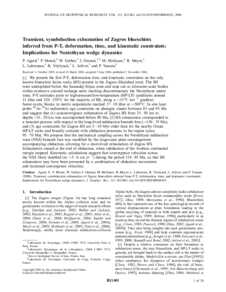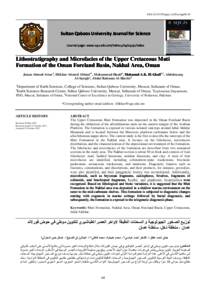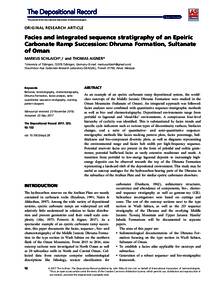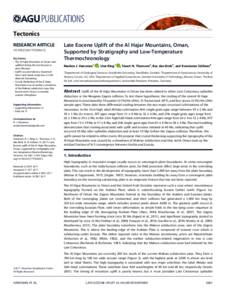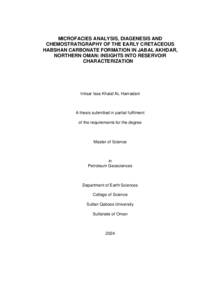Document
Transient , synobduction exhumation of Zagros blueschists inferred from P-T , deformation , time , and kinematic constraints : implications for Neotethyan wedge dynamics.
Identifier
DOI: 10.1029/2005JB004103
Source
Journal of Geophysical Research: Solid Earth. v. 111, 11, p. 1-28.
Contributors
Monié, P., Author
Gerber, W., Author
Omrani, J., Author
Molinaro, M., Author
Meyer, B., Author
Labrousse, L., Author
Vrielynck, B., Author
Jolivet, L., Author
Yamato, P., Author
Country
United Kingdom.
City
Oxford.
Publisher
Blackwell Publishing Ltd.
Gregorian
2006-11-04
Language
English
English abstract
We present the first P-T, deformation time, and kinematic constraints on the only known blueschist facies rocks (BS) present in the Zagros (Hajiabad area). The BS were underplated below the Sanandaj-Sirjan zone and crop out as kilometer-scale bodies within extensive colored melange units marking discontinuously the Neotethyan suture zone. P-T estimates point to high-pressure/low-temperature (HP-LT) conditions around 11 kbar and 520-530°C for the majority of BS, along a ∼15°C km-1 gradient. Some exotic blocks in matrix serpentinite reached 17-18 kbar at ∼500°C. In situ laser probe 40Ar-39 Ar radiometric age constraints on phengite cluster between 85 and 95 Ma and suggest that (1) synponvergence exhumation of Zagros BS from 35-50 km to depths 15-20 km was accomplished before 80 Ma, (2) BS exhumation corresponded to a transient process with respect to the long-lived subduction beneath Iran (∼150-35 Ma), and (3) age constraints for Zagros BS are 5-10 Myr older than for the nearby Oman HP-LT rocks and broadly coincide with obduction processes in the region (circa 95-70 Ma). We propose that the mechanical coupling across the Neotethyan subduction zone (NSZ) beneath Iran was modified by the large-scale plate rearrangement accompanying obduction, allowing for a short-lived exhumation of Zagros BS. Exhumation ceased at the end of obduction, when subduction of the Arabian continental margin stopped. Kinematic calculations suggest that convergence velocities across the NSZ likely doubled (to ∼5-6 cm yr-1) during the period 118-85 Ma, so that BS exhumation may have been promoted by a combination of obduction movements and increased convergence velocities.
Description
Article number B11401.
ISSN
2169-9313
Category
Journal articles

